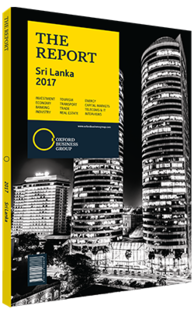Patali Champika Ranawaka, Minister of Megapolis and Western Development: Interview

Interview: Patali Champika Ranawaka
Which Megapolis project initiatives does the ministry regard as high priority?
PATALI CHAMPIKA RANAWAKA: The Western Region Megapolis project, as you know, is Sri Lanka’s grand strategy for growing into a high-income country – an economic development goal that we want to achieve while ensuring environmental sustainability, social equity in the distribution of development dividends and the happiness of individual citizens. With this broad vision as the foundation, a lot of effort has been put into making crucial planning decisions to establish priorities for the execution of this project.
Our highest priority is transport and solid waste management. There are around 1. 9m people commuting to and from Colombo every day, and this figure has doubled over the last three decades. Our public transport systems have not developed to accommodate the increasing numbers, nor have they improved in quality standards to meet the expectations of the growing middle class. This has led to the proliferation of private vehicles, so much so that they occupy as much as 85% of space on the roads, while carrying only 50% of the commuters.
The inevitable outcome of this is that the average speed on Colombo’s roads has dropped to around 12 km per hour, and this is being reduced by 1 km per hour every year. The cost of mobility at the national level, which is largely driven by the Colombo Metropolitan Region, increased to 11. 3% of GDP by 2014, and could reach a staggering 24. 7% by 2020 if we allow business to continue as usual and do not make some substantial interventions.
It is a generally accepted norm that when and if the cost of mobility of a country exceeds 20% of GDP, the national economy could come to a virtual standstill. It is in this context that we have planned a series of priority interventions in the transport sector, with a view to turning the present challenge into an opportunity for growth in Sri Lanka.
What specific interventions are already being made in the transport sector?
RANAWAKA: Basically, there are four: The light rail transit (LRT) systems, the bus priority scheme, inland water transportation systems and elevated highways. There are seven LRT circuits identified for the core metropolitan area. Out of those seven circuits, the feasibility study for the route covering Battaramulla and the Colombo internal circuit up to Fort, commenced in early 2017, with Japanese cooperation. It is expected that implementation work will begin once the feasibility study phase is over. As for the rest of the LRT circuits, expressions of interest will be called for in the first quarter of 2017.
A pilot project for the bus priority programme, with the assistance of the Korea International Cooperation Agency, is scheduled to be implemented in early 2017. This will be followed by the introduction of additional low-floor buses with air conditioning on selected routes under a modernisation programme. Another important intervention is in the area of inland waterways. Requests for proposals will be called for in early 2017 for the introduction of services on the routes from Wellawatte to Battaramulla and within the extended Beira Lake area, and then along both banks of the Kelani River. Another major intervention is the construction of two elevated highways from Peliyagoda to Colombo Port Entry road and from Orugodawatta to Rajagiriya. These will be implemented by the Road Development Authority.
To what extent will the Megapolis project rely on international investors and creditors?
RANAWAKA: As much as 80% of the total investment required for the Western Region Megapolis development is expected to come from the private sector, whether it be international, regional or local. The proportion expected to be financed through international credit is approximately 10%.
You have reached the limit of premium articles you can view for free.
Choose from the options below to purchase print or digital editions of our Reports. You can also purchase a website subscription giving you unlimited access to all of our Reports online for 12 months.
If you have already purchased this Report or have a website subscription, please login to continue.

